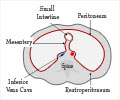A joint study has shed more light on the rise of a new type of dangerous bacterial infection that has become common among patients suffering from cystic fibrosis.

People with Cystic Fibrosis are prone to serious infection in part because they have sticky mucus that can clog up their lungs. In recent years doctors have seen a global increase in the number of infections caused by the antibiotic-resistant bacterial species Mycobacterium abscessus (M. abscessus). M. abscessus is distantly related to the bacterium that causes Tuberculosis and is usually found in water and soil. Until now, experts had thought it could not be passed from person to person.
"There has been worldwide concern about the rising number of M. abscessus infections in people with Cystic Fibrosis and anxiety that spread from person to person might be responsible," said Dr Andres Floto, Research Director of the Cystic Fibrosis Unit at Papworth Hospital, Principal Investigator at the Cambridge Institute for Medical Research, University of Cambridge and lead author of the research published in The Lancet. "Our work has allowed us to lead the world in changing hospital infection control: we used state-of-the-art DNA sequencing technology to understand how the infection is being spread, which conventional techniques would have missed."
"Our results will help to protect patients from this serious infection."
The team used the latest methods to sequence the genomes of almost 170 isolates of M. abscessus from Cystic Fibrosis patients collected over a five-year period. By looking at the fine detail of the relationships between the bacterial genomes, to produce a 'family tree', the research team could determine where it was likely that infection had passed from one patient to another. They showed that, even with nationally recommended infection control measures in place, M. abscessus can spread between patients.
"We are increasingly able to use DNA studies to improve patient care," says Professor Julian Parkhill, Head of Pathogen Genomics at the Wellcome trust Sanger Institute. "By sequencing the complete genomes of bacteria we can accurately describe where they have emerged from and how they pass from person to person.
Advertisement
This new information has led to rapid changes in how people with Cystic Fibrosis are cared for in hospital to protect them from this emerging threat.
Advertisement
Source-Eurekalert












